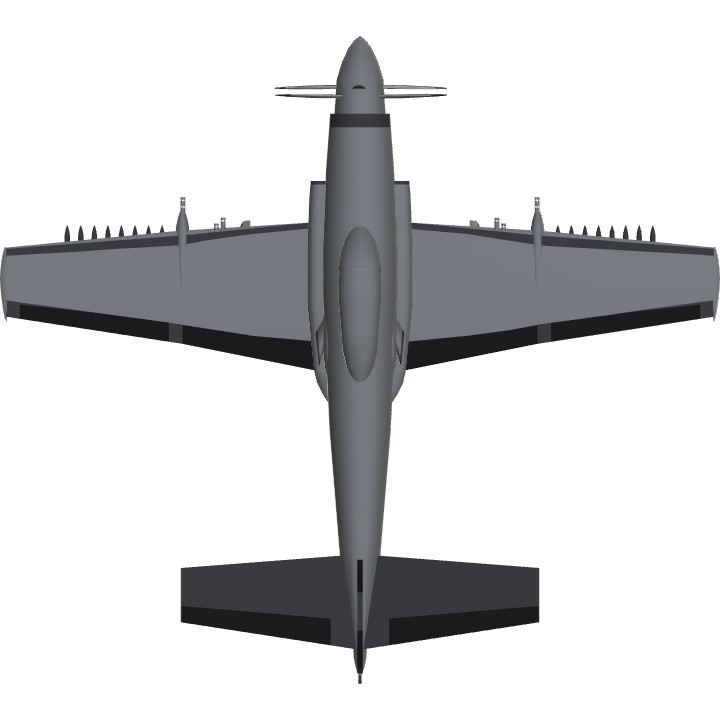CONTROLS:
AG 1: Drag Chute
AG 2: Drop Torpedo, Port Side
AG 3: Drop Torpedo, Starboard Side
AG 5: Wing folding mechanism on/off. Fold with VTOL up.
AG 6: Arresting Hook
AG 7: Arm/Disarm 30mm Guns
AG 8: Disarm/Arm 20mm Guns
VTOL: Flaps Up/Down (Inverted), Wing Folding if AG5 On
At the dawn of the Cold War, jet engines had taken the spotlight in the world of combat aircraft. However, jet-powered aircraft were still on their early days and were experiencing trouble with operations from the short, relatively small aircraft carriers of the time. To attend a request for a new naval strike aircraft, to have compact size but higher top speed and payload than the piston-engined aircraft then in service, Socrux engineers decided to experiment with arrangements of counter-rotating propellers powered by large, 24-cylinder supercharged piston engines. However, these attempts proved unsuccessful. The engines were complex, expensive, required intensive care and maintenance, and perhaps most importantly, were exceedingly heavy for the power they delivered.
In the late 40's, it was decided to adapt the existing prototypes to newly-designed turboprop engines. This seemingly simple but fundamental change proved to be extremely successful: the new prototype exceeded performance expectations, and was ordered into service as the Trovão (Thunder).
Despite jet technology catching up and carriers becoming larger, resulting in jet aircraft capable of carrierborne operation, the Trovão was still appreciated for its performance, though relegated to secondary roles. Its lower speed and great handling would prove very welcome in counter-insurgence and light intervention operations, with the craft being able to precisely employ its armament. It could carry an assortment of weapons, but the most common naval strike payload was two torpedoes under the fuselage and 16 rockets under the outer wings. Armed with four 20mm cannons tucked into the wings, the Trovão is very commonly seen with two bolt-on gunpods, one on each wing, with an additional 30mm cannon each.
It served for a remarkably long time considering how quickly it was surpassed by jet aircraft, being only completely phased out in the late 70's. Ground-based versions were developed without folding wings, and modernized variants have been developed for COIN. Designated S.A-20M "Trovão Mike", these aircraft have been exported to a few small countries for counter-insurgency operations. Old airframes have also found remarkable popularity with warbird collectors and racing teams. With all armament and military gear removed and great care taken in polishing the aircraft's surfaces, these planes are at the peak of their raw performance.
Specifications
Spotlights
- Guiso 5.4 years ago
- teodor99 5.4 years ago
- KenworthHeavyHauler 5.4 years ago
General Characteristics
- Created On Windows
- Wingspan 43.5ft (13.3m)
- Length 39.2ft (11.9m)
- Height 15.0ft (4.6m)
- Empty Weight 6,577lbs (2,983kg)
- Loaded Weight 9,888lbs (4,485kg)
Performance
- Horse Power/Weight Ratio 0.303
- Wing Loading 25.8lbs/ft2 (126.2kg/m2)
- Wing Area 382.6ft2 (35.5m2)
- Drag Points 3372
Parts
- Number of Parts 119
- Control Surfaces 7
- Performance Cost 667








